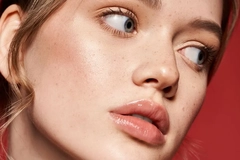WHO recognizes sunscreen as essential medicine
Key takeaways
- The WHO has added sunscreen to its Model List of Essential Medicines.
- The move follows an evidence submission of sunscreen’s health and cost-saving benefits.
- Governments may respond by improving access to sunscreens on a national level.

The World Health Organization (WHO) has added sunscreen to its Model List of Essential Medicines, officially recognizing it as a necessary tool for global health.
The move shifts sunscreen from being classified as a cosmetic to being acknowledged as a preventive medicine, with the potential to improve access and reduce UV-related diseases worldwide.
The WHO’s Essential Medicine list guides countries in identifying the most vital health products for their populations.
“Essential medicines are those that satisfy the priority health care needs of a population. They are selected with due regard to disease prevalence and public health relevance, evidence of efficacy and safety, and comparative cost-effectiveness,” the WHO states.
By joining this list, sunscreen is recognized alongside treatments for infectious diseases, chronic conditions, and other core public health concerns.
The update follows an application led by UN independent expert Muluka-Anne Miti-Drummond with support from the Global Albinism Alliance, Pierre Fabre Foundation, and Beyond Suncare.
Their proposal was submitted in 2022, rejected in 2023, and resubmitted in late 2024. It was approved in May 2025 and formally published in the organization’s list in September.
The submission emphasized sunscreen’s role in preventing skin cancer, actinic keratosis, and photoaging while also being cost-effective compared to treating UV-induced conditions.
.jpg) In sub-Saharan Africa, as many as 90% of people with albinism die before the age of 30 due to UV-related complications.Return to the list
In sub-Saharan Africa, as many as 90% of people with albinism die before the age of 30 due to UV-related complications.Return to the list
This is not sunscreen’s first appearance on the WHO essential medicines list. UV-blocking agents were included in 1989, with further adjustments in the 1990s. However, sunscreens were removed in 2005.
At the time, the WHO acknowledged their value but questioned their place in public distribution.
“The committee noted that the use of topical sun protection agents (sunscreen products) containing substances that protect the skin against UV radiation prevents squamous cell skin cancer in susceptible people,” said WHO.
“The committee also noted that although the public health relevance of this item for the prevention of skin cancer is high, sunscreens are normally not provided by public facilities, and that provision through such sources was not needed. The committee therefore recommended that topical sun protection agents be deleted from the Model List.”
Twenty years later, changing evidence and advocacy have brought sunscreen back onto the essential medicines list.
Life-saving, cost-saving
While sunscreen is widely recommended for everyone, its essential status is particularly critical for people at higher risk of UV-related diseases. People with albinism, who lack melanin and face disproportionate rates of skin cancer, were central to the advocacy campaign.
Personal Care Insights recently reported on research that showed, in sub-Saharan Africa, as many as 90% of people with albinism die before the age of 30 due to UV-related complications.
“It’s critical to recognize that we are in an access to care crisis. One thing we are doing is to try to define the scale of the problem and where the biggest gaps are. This data will give us a road map to action,” Esther Freeman, director of Global Health Dermatology at Massachusetts General Hospital, US, told us.
.jpg) Around 16,000 new cases of melanoma are diagnosed each year in the UK, with 2,300 resulting in death.Moreover, the UN’s Miti-Drummond and the Global Albinism Alliance’s submission stresses sunscreen’s importance beyond higher-risk patients, to include broader populations living under high solar exposure.
Around 16,000 new cases of melanoma are diagnosed each year in the UK, with 2,300 resulting in death.Moreover, the UN’s Miti-Drummond and the Global Albinism Alliance’s submission stresses sunscreen’s importance beyond higher-risk patients, to include broader populations living under high solar exposure.
Their submission cites an Australian study showing that daily sunscreen use costs around US$0.74 per person per year, prevents hundreds of skin lesions, and saves the Australian government over US$88,000 in health care costs over five years.
“Sunscreen is the only effective preventive measure against harmful UV exposure for uncovered skin areas… The inclusion of sunscreen on the [list] would facilitate public health programs to make it more accessible, addressing inequities faced by economically disadvantaged individuals,” Miti-Drummond’s submission reads.
Access to the inaccessible
Before this year’s summer kicked off, the British Beauty Council launched a cross-industry UV Safety Initiative to improve access to these products.
According to the council, 57% of UK consumers say sunscreen is too expensive, and 29% say they would wear it daily if it were cheaper.
At the same time, melanoma diagnoses in the UK are projected to reach 26,500 annually by 2038, according to Cancer Research UK. Currently, around 16,000 new cases are diagnosed each year, with 2,300 resulting in death.
With sunscreen now listed alongside antibiotics, antivirals, and cancer treatments, the move is expected to prompt governments to add it to their national lists. This could improve affordability and supply, while shifting sunscreen from being viewed as a cosmetic luxury to a core part of public health.












